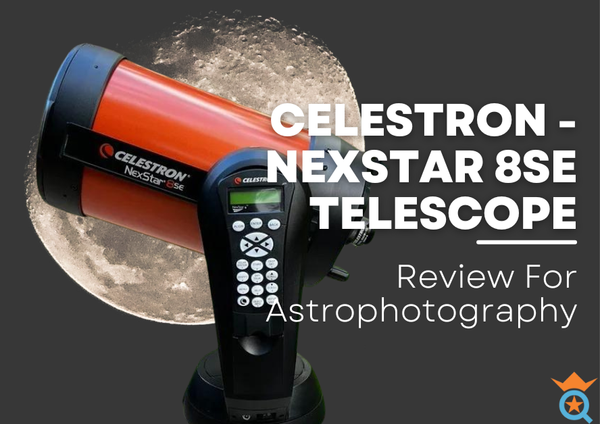Telescopes are amazing tools that let us see the universe in ways we never imagined. By capturing light and bending it through lenses and mirrors, these devices bring distant celestial objects into view. This article explores optical telescopes, including refractors, reflectors, and catadioptrics. We'll explain how they use mirrors, lenses, and corrector plates to guide light rays, creating stunning images of bright objects and distant stars.
Whether you're using a reflector with a large mirror or a refractor with a long focal length, understanding these tools can improve your stargazing experience.
Types of Optical Telescopes
There are three main types of optical telescopes:
- Refracting Telescopes
- Reflecting Telescopes
- Catadioptric Telescopes
Each type has its features and benefits, making them suitable for various uses.

Refracting Telescopes
Refracting telescopes, or refractors, use lenses to bend and focus light. The first telescope, invented by Hans Lippershey in 1608, was a refractor. Later, Galileo Galilei built his own version, improving our ability to observe celestial objects.
Advantages of Refracting Telescopes:
- Smaller size for the same quality of images.
- Produces steady and sharp images compared to reflectors of the same size.
- Requires less maintenance and cleaning.
- Easy to set up.
Disadvantages of Refracting Telescopes:
- Prone to chromatic aberration, where lenses fail to focus all colors at a single point, creating a rainbow effect around the image.



Refracting Telescopes
Reflecting Telescopes
Reflecting telescopes, also called reflectors, use mirrors to collect and focus light. Isaac Newton built the first one in 1668, known as the Newtonian Reflector.
Advantages of Reflecting Telescopes:
- No chromatic aberration since mirrors reflect light uniformly.
- Allows the use of larger mirrors, which can gather more light and see fainter objects.
- Generally cheaper than refractors of the same size.
Disadvantages of Reflecting Telescopes:
- Requires regular cleaning due to the open telescope tube design.
- More maintenance needed compared to refractors.



Reflecting Telescopes
Catadioptric Telescopes
Catadioptric telescopes, also known as compound telescopes, use both lenses and mirrors to create images. They are built to fix the optical errors found in refracting and reflecting telescopes, combining the best features of both.
Advantages of Catadioptric Telescopes:
- Combines the benefits of both lenses and mirrors.
- Typically more compact and portable.
- Reduces optical errors.
Disadvantages of Catadioptric Telescopes:
- Generally more expensive than simple refractors and reflectors.
- Can be complex to set up and use.

Choosing the Right Telescope for Beginners
If you're a beginner looking for a telescope for astrophotography or planet viewing, consider the following points:
Reasons to Choose a Reflector:
- Cost-effective compared to other types.
- Ideal for observing faint and deep sky objects due to their large primary mirrors.
- Requires more maintenance and cleaning.
Reasons to Choose a Refractor:
- Compact and easy to use.
- Minimal maintenance is required.
- Higher cost for the same aperture size compared to reflectors.
Reasons to Choose a Catadioptric Telescope:
- Versatile and corrects optical errors.
- More compact and portable.
- Higher cost and complexity in setup.
Famous Telescopes
Some of the most famous telescopes are the Hubble Space Telescope and the James Webb Space Telescope. The Hubble has a long focal length and is known for its stunning images of distant galaxies and deep-sky objects. The James Webb, with its large segmented mirrors, is designed to gather more light and offer even more detailed images of the universe.
Conclusion
Understanding the types of optical telescopes can help you choose the right one based on your needs and preferences. Whether you're an amateur astronomer or a seasoned professional, there's an optical telescope that fits your requirements. Weigh the pros and cons of each type, and you'll be ready to explore the wonders of the night sky.
Frequently Asked Questions
What are types of optical telescopes?
There are three main types of optical telescopes. First, refracting telescopes use a lens to bend light and create an image. Second, reflecting telescopes use mirrors to gather and focus light. Third, catadioptric telescopes combine lenses and mirrors, using a corrector plate to fix optical errors.
How many types of telescopes are there?
There are several types of telescopes. The main ones include optical telescopes, which can be refractors, reflectors, or catadioptrics. Additionally, there are radio telescopes that collect data from radio waves, X-ray telescopes for observing space X-rays, and gamma-ray telescopes for detecting gamma rays from cosmic sources.
What are the 3 properties of optical telescopes?
Optical telescopes have three main properties. First, light-gathering power, determined by the size of the objective diameter or primary mirror, affects how much light the telescope collects. Second, resolving power is the ability to see fine details and distinguish between close objects. Third, focal length, the distance over which incoming light rays are focused, impacts image magnification and field of view.
What was the first type of optical telescope?
The first type of optical telescope was the refracting telescope, invented in 1608 by Hans Lippershey. It used two lenses to bend and focus light, allowing for the direct visual inspection of distant objects.
What are the types of optical telescopes?
Optical telescopes are primarily categorized into three types. First, refracting telescopes use an objective lens to gather light. Second, reflecting telescopes use a primary mirror to gather light and a secondary mirror to focus it. Third, catadioptric telescopes combine lenses and mirrors, incorporating a corrector plate to improve image quality.








